Third parties have an interesting history in American politics. Historically, every major party started out as some sort of underdog and rose to the top of the heap. Today, we have more choices than ever when we go to the ballot box, which brings up the question: which third party fits you best?
Well, if you want to vote for a winning candidate, probably none of them. But their success in running their own candidates doesn’t make them less interesting – and it certainly doesn’t keep them from having major effects on national elections, as the election of George W. Bush in 2000 (and arguably, the election of Bill Clinton in 1992) taught us all.
Here are some of America’s favorite, best, and weirdest third parties that you can join today.
10. America First Party
The history of the America First Party is tied to the history of the Reform Party. Begun in 2002 by a group of people who supported Pat Buchanan’s run for the President in 2000 on the Reform Party ticket, the America First Party represents a platform of fairly typical hard-right values, both economically and socially, while also espousing a far more isolationist tone than other conservative parties like the Republicans.
They support smaller government, tax cuts, gun rights, energy independence, and American sovereignty. They’re pro-life, believe America has and should maintain Christian roots in the public square, and basically oppose progressiveness on about 95% of issues. They’re also very much in favor of limiting America’s involvement in foreign aid, ending NAFTA and CAFTA and other free trade agreements, opposed to wars in foreign countries, and believe in repurposing the military from Iraq and Afghanistan to protect the border from illegal immigrants. They’ve also fought against fringe individuals that attempted to introduce racist elements into the party. In other words: they’re pretty much in line with the exact platform that Pat Buchanan ran on in 2000 and continues to push to this day.
Which makes it very interesting that Pat himself is not a member of the Party, having returned to the Republican party after a 5-year absence in 2004. But that doesn’t keep him from selling his books through the party’s website, specially autographed for the party’s use.
To date, they’ve never run a Presidential candidate (endorsing the Constitution Party in 2004 and 2008, along with Libertarian Bob Barr in 2008) and haven’t had any party members elected as a member of the party.
9. Communist Party USA
There’s a lot of debate today about the benefits and detriments about socialism and communism, but most people probably don’t realize that the US has had its own collection of Red parties for nearly a century. The earliest one was the Socialist Labor Party, which was a pretty powerful little party in its day, but split in different directions in 1919 with the rise of Vladimir Lenin in Russia, who invited the leftists to join the Communist International Party. This actually didn’t work very well, since it ignited the first Red Scare of the late teens and early ’20s, forcing the various factions underground.
Rising again in the mid-20’s, the Communist Party USA never had a chance in any kind of election. In 1928, they faced down against the seemingly-unbeatable Republican Party in the midst of the Roaring 20’s, and for the next 5 elections after that, they faced down the juggernaut of the Democrat Party with FDR and Harry Truman. Then, of course, you have the 1-2 punch of the House Un-American Activities Committee and the Army-McCarthy Hearings in the US Senate.
By then, much attention had been turned to the fact that the CPUSA was pretty much the puppet arm of and often spied for America’s greatest enemy: the Soviet Union. Since the fall of the Soviet Union, the CPUSA has struggled to find an identity without the support of its former ally.
Most of the influence of the CPUSA can be seen in history rather than in political success. They’ve never had any real success in elections, local or national, however, their close alliances with labor unions is still felt to this day, and their child parties formed at later dates have been instrumental in both the anti-war movement and the radical elements of the Civil Rights movement, such as the Black Panthers and the later Black Radical Congress.
8. Marijuana Party
Remember the Prohibition Party? Well, say hello to their polar opposite: the Marijuana Party. Formed in 2002 by a woman from Alabama who’d been arrested for misdemeanor pot possession, the Party’s platform is pretty basic: legalize pot, end the drug war, and refocus law enforcement dollars on combating violent crime. They don’t talk much about things like foreign affairs or social issues. Just weed.
Unsurprisingly for a single-issue party, they’ve not done very well. They’ve mostly backed Libertarian candidates and haven’t really expanded beyond a loose collection of people who want Americans to have the legal right to toke up. They’ve had no luck in the few races they’ve run candidates in, and their own founder, Loretta Nall, had zero luck running for governor of Alabama as a Libertarian, receiving 0.02% of the statewide vote.
7. Workers World Party
The Workers World Party got its start in the late 50’s by declaring themselves the true descendants of Trotskyist socialism, not like those filthy folks in the Socialist Workers Party.
For the record, the real difference between all the flavors of socialism / communism is in how the power within the state is balanced, and whether that balance is achieved through a democratic process or through a committee-based process or through state control. There’s a lot of finer points that go along with it, but for most Americans, that’s the best, most simple explanation to start the discussion.
Meanwhile, the Workers World Party hasn’t been so successful in election politics as much as it has been in influence and attention-grabbing stunts and intra-party splits. They’ve been very vocal in their support of the North Korean government and in their opposition to the Vietnam War. In recent years, they helped to found the ANSWER Coalition in opposition to the wars in Afghanistan and Iraq, but that group has now gone with a split-off group called the Party for Socialism and Liberation, whose politics are pretty much a carbon copy of the WWP.
6. Pirate Party
Don’t sign up for the Pirate Party if you’re looking for peglegs and Johnny Depp slurring all over the place. This party has absolutely nothing to do with sailing the seven seas, and everything to do with a libertarian ethic, equality, and reforming intellectual property laws. They’ve not gone too far into setting up a full platform, but their core values favor the open exchange of ideas and tools, transparency, individual privacy, equality, and merit-based reward.
Started in 2006 as an extension of the Swedish Pirate Party, the US Pirate Party isn’t a fan of traditional left-right politics, instead favoring the hacker ethic put into political practice. Their initial purpose was to provide support for the free distribution of materials over the BitTorrent filesharing network and to fight for changes to copyright and trademark laws. Since then, they’ve evolved their platform into a more traditional format, still heavily focusing on issues like freedom of information, civil liberties, personal privacy, and opposition to monopolies.
Internationally, the Pirate Party has seen some significant success, winning seats in the European Parliament. Locally in the US, the story isn’t quite as successful, with no wins in elections and ballot access in less than half of the states.
5. Modern Whigs
One of the big arguments in American politics is whether there is a place for a true middle-ground party to represent the moderates who don’t find a consistent home in either the Republican or Democrat parties. The Modern Whigs are seeking to fill that void.
The original Whig Party was one of the foundational elements of the Second Party System in the 2nd quarter of the 1800’s, when the Democratic-Republicans split into the Jacksonian Democrats and the National Republicans, led by John Quincy Adams and Henry Clay. The Whigs formed from the ashes of the National Republicans and formed a powerhouse of a party until they just kinda fell apart around 1850 or so, when Millard Fillmore took the Presidency from the recently deceased Zachary Taylor. They slowly dissolved over the next few years, ultimately reforming in the Republican Party.
Begun in 2008 by veterans of Iraq and Afghanistan, the Modern Whigs believed that neither party was fulfilling their obligations to the American people, and sought to fill the void being created by the polarization of the two major parties. Their platform is centrist, and based in pragmatism and what they believe is common sense. The best description we can come up with is that they’re slightly libertarian centrists that avoid the populism of earlier middle-ground third parties.
While the Modern Whigs haven’t been as successful on the national or state levels as the original Whigs, they have had some success in local elections.
4. Reform Party
The Reform Party formed in 1995 as a reaction to Ross Perot’s unsuccessful but notable run for the Presidency in 1992, when he was the most successful third party candidate since Teddy Roosevelt’s run on the Progressive / Bull Moose ticket in 1912. Running Perot in 1996 was a natural flow for the party, who was shut out of the debates between Bill Clinton and Bob Dole (he made up for it via infomercials). The Party began to faction afterwards, over time breaking off groups like the American Reform Party, various Independence Parties, and the aforementioned America First Party.
The 2002 split with the AFP came about when the party decided to back Pat Buchanan over former Natural Law perennial candidate John Hagelin. Going with such a solid conservative angered party members, and so the Buchanan branch broke away, taking a lot of members and money with them. The RPUSA has been rebuilding from this split since 2002, barely cracking the public consciousness in Presidential Elections.
Those who criticize the idea of the place for a third party in the United States often point to the failure of the Reform Party to maintain its significance as a good model of why those parties are doomed to fail. Here’s a party that’s built on many of the issues that centrists find appealing: fiscal conservatism and social liberalism, with a strong belief in America’s uniqueness and exceptionalism – and since Ross Perot ran, it has consistently flopped in national elections as centrists ultimately voted for either Republicans or Democrats, probably because the party wasn’t truly a centrist party as much as it was a party that appealed to varying extremes of the two major parties.
That’s not to say there hasn’t been some success, most notably in the form of Jesse Ventura as governor of Minnesota for a single term, who appointed Reformer Dean Barkley to serve out the remaining term of Senator Paul Wellstone, who had died in a plane crash. Originally, Ventura wasn’t going to appoint a replacement for Wellstone, but when his funeral was turned into a political rally, Ventura became so disgusted that he made the appointment anyway, providing Republicans a crucial vote in favor of the Homeland Security Act of 2002. The party also continues to attract disaffected politicians from the two major parties, including former Louisiana Governor Buddy Roemer and former Ambassador Alan Keyes.
3. Constitution Party
People who think that Republicans are too conservative and call George Bush the most conservative President in the history of the United States are usually ignorant of the political spectrum and American history, and are usually wetting themselves by the time they finish reading the platform of the Constitution Party.
Started in 1991 as the US Taxpayers’ Party, these guys are, by far, the most conservative and theocratic party in the United States. Along with supporting typical hard-right conservative issues like an absolute originalist interpretation of the Constitution, ending illegal immigration, opposition to abortion and gay marriage, support for the death penalty, and a strong federal government, they also support a few theories most would consider fringe, like withdrawal from nearly all foreign relations and wars, replacing the income tax with an excise tariff, and repealing the direct election of Senators under the 17th Amendment.
Oh – and they want to, under law, declare Jesus Christ the Ruler of the Universe and these United States.
They’ve not had too much success in national elections, with their maximum result being Howard Philips receiving 0.19% of the vote in 1996’s race, followed closely by Pastor Chuck Baldwin in 2012 with 0.14% of the vote. On the state level, they’ve done a pretty good job in attracting big-name candidates, but not in winning races. New Hampshire Senator, Bob Smith, was a member of the Party for a month in 1999 when he failed to catch any interest from the GOP for their nomination for the Presidency, and then followed up with a failure to gain any ground for the Constitution Party’s nomination (thanks, apparently, to the New World Order), causing him to switch again to being Independent before losing his seat to John Sununu in 2002. Former Ambassador Alan Keyes has sought their nomination for the Presidency. In Colorado, former GOP Representative Tom Tancredo ran for the Governorship on the Constitution Party Ticket and got enough votes to come in 2nd in the race, more than tripling the numbers of the 3rd place GOP candidate.
2. Green Party
The Greens are an interesting group, and are a near-total antithesis to the Constitution Party. Strongly left-wing and just as populist, the Green Party has made its influence felt in American Politics without winning a single Federal election.
The Green Party started in the 1980’s as an extension of the eco-socialist West German Die Grünen party. The original purpose was baked in the Nuclear Age: opposition to the growing nuclear stalemate between the US and USSR, opposition to nuclear power and industrialization, a desire for government to address environmental issues like pollution, and general opposition to the NATO military buildup. Over time, these positions evolved into a solid left-wing populist belief system that spread around the globe, sparking the formation of Green Parties in other countries, including in the United States.
Their current positions are pretty much what you’d expect from a far left-wing party: environmentalism, social justice, opposition to violence, and a socialist approach to democracy, economics, domestic issues, and personal and corporate responsibility.
Their effectiveness on the campaign trail has been pretty far-reaching. On the Federal level, while they’ve never won a single electoral vote, they did steal enough liberal votes away from Al Gore in 2000 to quite possibly cost him the election, and became the rare American third party to achieve greater than a 1% turnout at the ballot box. At the state level, they’ve had the occasional win for a state legislature seat, but their greatest success has come at the municipal level, where they’ve won mayorships and city council seats at a fairly impressive rate for a third party. In fact, four towns in the US (Fairfax California, Arcata California, Sebastopol California, and New Paltz New York) currently have Green Party majorities on their city councils.
1. Libertarian Party
If there’s a third party that’s been waiting in the wings to take the stage in American politics, it’s the Libertarian Party. Started in 1972 with the borrowed slogan “There Ain’t No Such Thing As A Free Lunch”, they gained immediate attention when a Republican Elector pledged to Richard Nixon changed his vote to the Libertarian Party ticket of John Hospers and Theodora Nathan, casting the first electoral vote for a woman on a Presidential ticket in American history.
Over the years, their influence would wax and wane as they fought to gain ballot access in all 50 states and find candidates to run. They found them in all sorts of places, from airline pilots to former Republican Congressman Ron Paul (who later switched his membership back to the GOP and got re-elected to the US House, and later, twice, ran for President on the GOP ticket).
Their influence would be fairly minimal, however, until 2009, when the Tea Party movement grew in influence in opposition to the agenda of President Barack Obama and the supermajority Democrat-controlled Congress. The Libertarians worked within the movement and gained back much of the support they’d lost over the 90’s and 2000’s.
The politics of the Libertarian Party are often viewed as hard right-wing, but this is not accurate. If anything, they are as government-minimalist as you can possibly get without going full-on anarchist. They favor a hands-off, absolute free-market approach to the economy, absolutely no government involvement or influence in personal matters, and no foreign aid or intervention unless absolutely, 1000% necessary. Ayn Rand wrote “Atlas Shrugged”, but the Libertarians expanded on it (ironically, since Rand herself hated the Libertarian Party, fearing their rule would lead to anarchism, which would eventually lead to collectivism, which she was heavily opposed to).
From an electoral point of view, the Libertarian Party has probably been more successful than any current third party. They’ve reached the magic 1% level in 2 elections (1980 and 2012) and are the only third party since 1972 to get an electoral vote. They’re also the only one to have ballot access in all 50 states. They’ve won hundreds of elections to state and municipal seats and, as of today, 149 Libertarians are currently serving around the country (mostly in city councils).

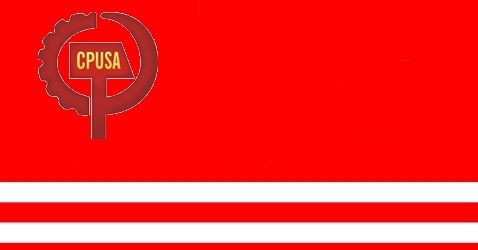
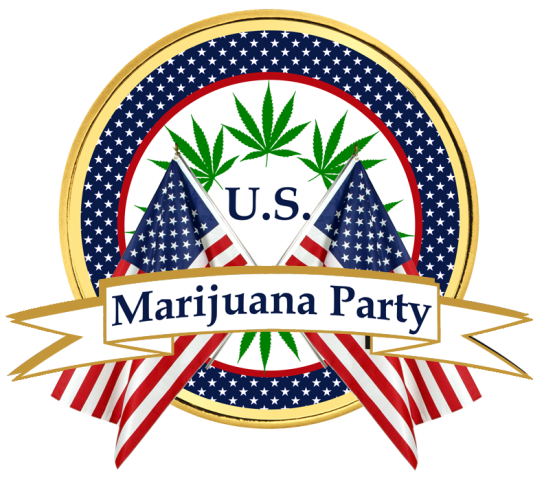


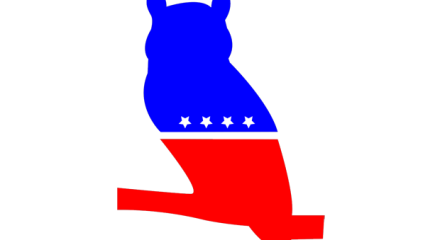

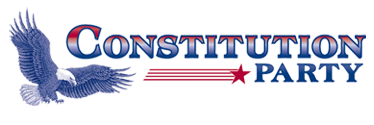
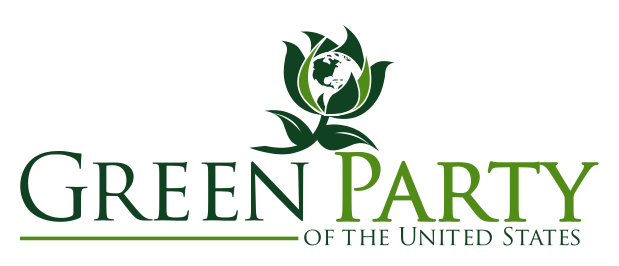
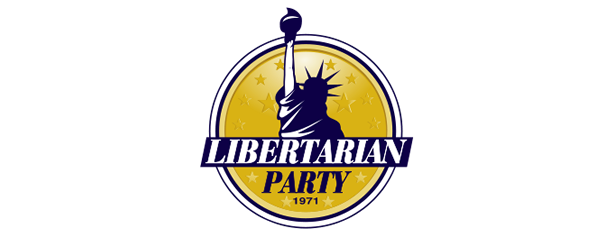
11 Comments
Apparently “ending illegal immigration” has become a “hard-right” issue.
Look how far we’ve come.
Your spoiler theorist perspective of third parties is shallow, unappreciative of the efforts the Democrats and Republicans have engaged in to keep third parties weak (you’re clearly part of their efforts), and ignores the fact that third parties were able to get candidates elected to Congress by the dozens at times before the 1950’s. I realize this is more of a mainstream casual list than a balanced scholarly paper, but our country is in desperate need of something more resembling the latter.
This list needs to be updated! Greens have fallen apart and some went to the Modern Whig Party and Justice Party. Reform Party is only working in New York because of fusion voting. Now missing some national officers. A few of their national officers have been there for many, many years. NO Growth. The Modern Whigs are three times bigger than when this list was posted. I don’t have any info on how health the Constitution Party is now. Do some research on the top 5 parties and then talk to their national Chair person. This list should be the Libertarian, Constitution, Modern Whig, Green party, and then Reform Party.
How many local elected officials do the Constitution and Modern Whig Parties have? How many states do they have partial or full ballot access in? How many candidates are they running? Just wondering, because by all metrics they’re still weaker than the Green Party, which is running 100+ candidates (including myself), has over 100 local and state officials, and ballot access in 22 states and partial ballot access in some districts in IL.
The system is rigged to keep Third parties down. Signatures needed to field candidates, local,state and federal election law requirements designed to shut out candidates fielded from these parties. Even this write up is made to make people think their vote for a third party candidate is just a waste. Most people-me included -want a say in what candidates run in the major parties so register with them.
So far I’m probably closest to the Constitution Party it looks like. I do however believe that free trade with in reason is actually helpful. I also think the Iraq Afghanistan wars was needful. On social issue’s I think the Republican’s and Libertarian are abit further left than I like. Guess some would consider my Christian Right.
The author is on drugs.
American Patriot Party .CC
What about the Citizens Freedom Party
Need to update this list!
Duverger’s law says none of them will win.